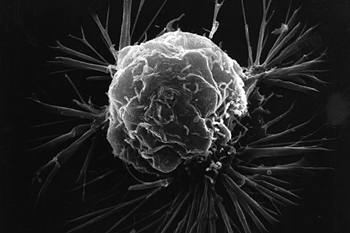Engineered Virus Designed to Fight Triple-Negative Breast Cancer
By LabMedica International staff writers
Posted on 12 Feb 2014
Scientists have found a possible cure for one of the most deadly, aggressive, and least treatable forms of breast cancer called triple-negative breast cancer (TNBC). In laboratory research involving human cancer cells, scientists exploited a virus comparable to the one that helped eradicate smallpox to persuade cancer cells to generate a protein that makes them disposed to radioactive iodine. Posted on 12 Feb 2014
The new findings were published in the February 2014 issue of Federation of American Societies for Experimental Biology’s the FASEB Journal. “We hope that the recent developments in genetic engineering, virology, and targeted radiotherapy will soon translate into an entire class of innovative oncolytic virotherapies for the treatment of deadly cancers,” said Yuman Fong, MD, a researcher involved in the work from the department of surgery at Memorial Sloan-Kettering Cancer Center (New York, NY, USA).

Image: Breast cancer cell. Triple-negative breast cancer is an aggressive disease with few therapeutic options. Patients with such tumors can be treated only with chemotherapy (Photo courtesy of the National Cancer Institute).
In the study, Dr. Fong and colleagues effectively infected and destroyed TNBC cells using a Vaccinia virus. Furthermore, the researchers were also able to utilize the virus to cause infected cancer cells produce a cell surface protein called hNIS (human Na+/I- symporter) that typically is used to concentrate iodine in thyroid cells. Expressed in thyroid cancer, the hNIS protein is why most thyroid cancers can be cured or successfully treated with a small dose of radioactive iodine, killing thyroid cancer cells expressing hNIS in the process. Equipped with the ability to compel TNBC cells to produce this protein, researchers now have a way to deliver anticancer treatments to this lethal and resistant form of cancer.
“This is an important and significant discovery that basically combines proven cures for two other diseases,” said Gerald Weissmann, MD, editor-in-chief of the FASEB Journal. “Even more exciting is that the effects of this virus and radioactive iodine are well known in people, hopefully reducing the amount of time it will take for it to reach the clinic.”
Related Links:
Memorial Sloan-Kettering Cancer Center














